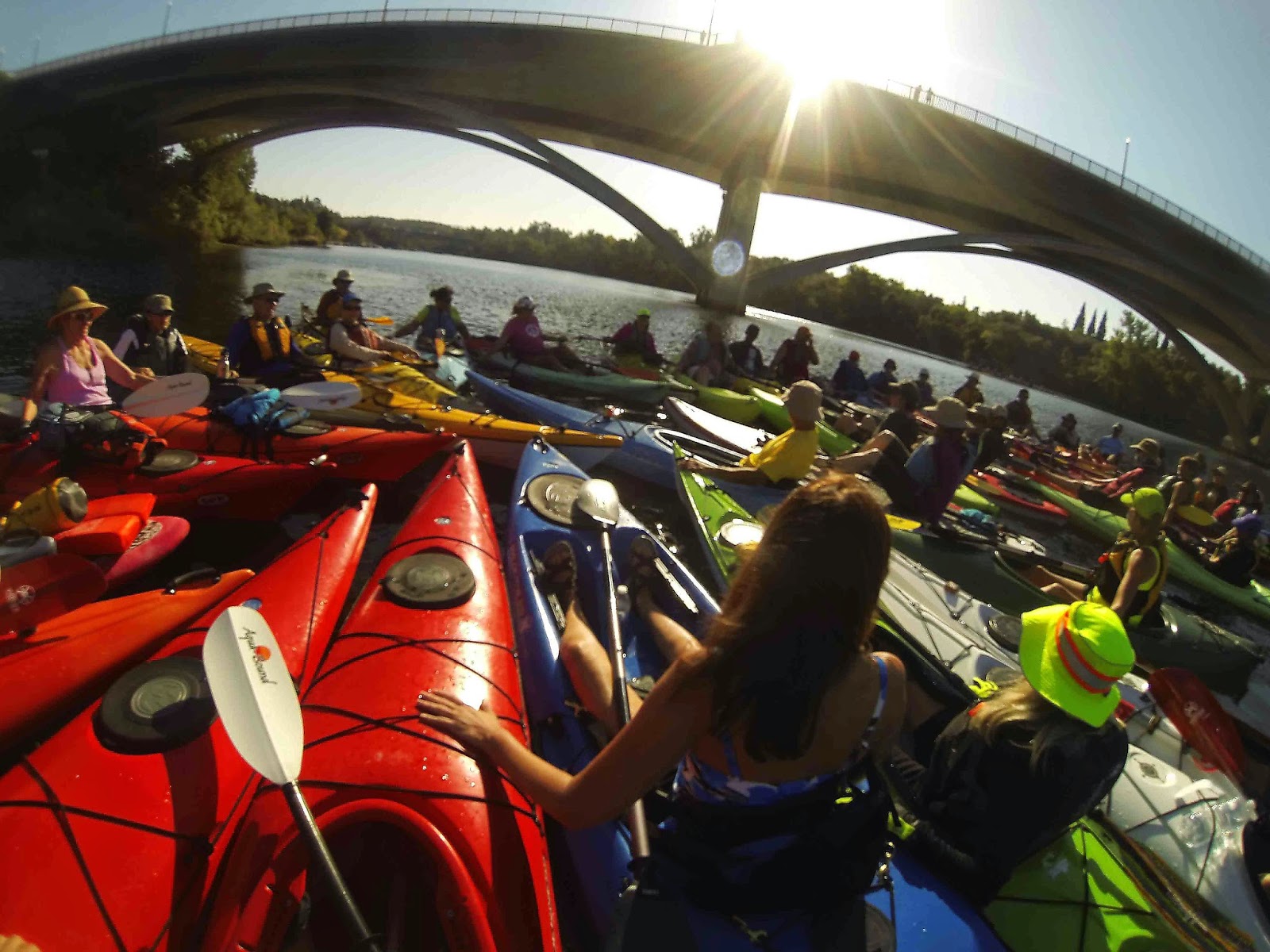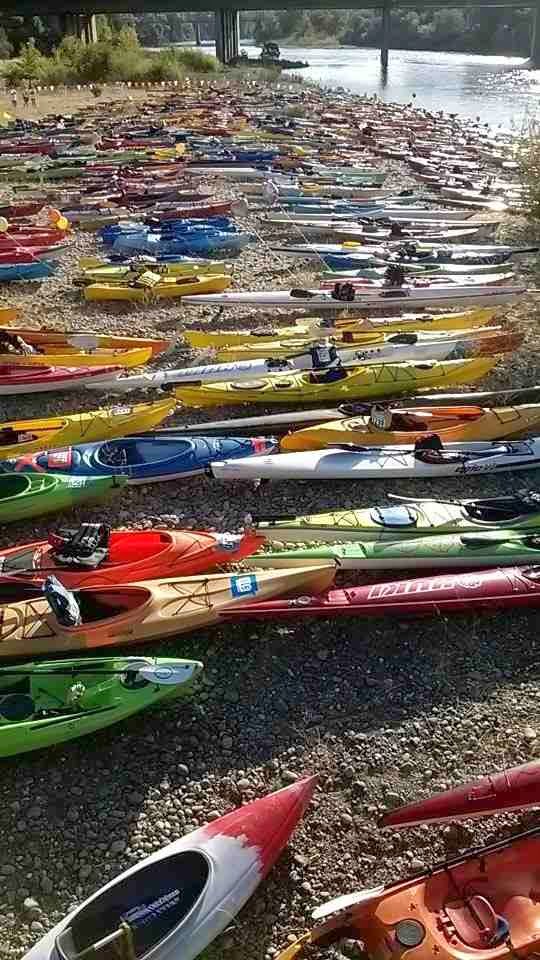 |
| Photo from the National Geographic Production 2002 of Lewis & Clark: Great Journey West. |
In the fall of 1805 the Corps of Discovery put their newly fashion dugout canoes into the fast-moving Clearwater river and for the first time in nearly two years had the current to their back. Captains Meriwether Lewis and William Clark had faced many nautical challenges since leaving St. Louis, Missouri, in May 1804, but nothing in their experience had prepared them for the falls and rapids that lay ahead on what is now Idaho and eastern Washington.
"October 7, 1805, All the canoes in the water. We load and set out, after fixing all our poles &c...Proceed on, passing many bad rapids. One canoe, that in which I went in front, sprung a leak in passing the third rapid." ---William Clark
Whitewater rapids are rated according to difficulty from Class I (easy flow and small waves) to Class VI (virtually unrunnable). Even with today’s high-tech kayaks and rafts, Class V rapids are not included on most commercial river trips. Navigating the rocks, waves, dangerous currents, and steep drops of Class V rapids require scouting and expert paddling skills. The men of the Corps of Discovery would have to develop these skills along the way if they expected to survive.
"October 14, 1805, In passing through a short rapid opposite the head of an island, ran on a smooth rock and turned broadside. The men got out on the rock, all except one of our Indian chiefs, who swam on shore. The canoe filled and sank. A number of articles floated out." ---William Clark
They were nearing the junction of the Snake and Columbia Rivers. It was late in the season and urgency was on their minds. They needed to make miles no matter what unknown rapids roar ahead, around the bend. They took many chances paddling the rough water losing tomahawks, shot pouches, bedding and clothing, but never a canoe, rifle or man.
"October 16, 1805, Determined to run the rapid. Put our Indian guide in front, our small canoe next, and the other four following each other. The canoes all passed over safe except the rear canoe, which ran fast on a rock at the lower part of the rapids. With the early assistance of the canoes and the Indians, who were extremely alert, everything was taken out, and the canoe got off without any injury...At 14 miles passed a bad rapid, at which place we unloaded and made a portage of 3/4 of a mile, having passed 4 smaller rapids." ---William Clark
About a week later the Corps of Discovery encountered Celilo Falls. The beginning of a 55-mile stretch of the Columbia River proved to be the most difficult and dangerous part of their journey through the Pacific Northwest.
 |
| Celilo Falls 1899 |
October 23 1805, I, with the greater part of the men, crossed in the canoes to the opposite side of the falls and hauled them across the portage of 457 yards, which is on the larboard side and certainly the best side to pass the canoes. I then descended through a narrow channel, about 150 yards wide, forming, a kind of half-circle in its course of a mile.---William Clark
The portage of the falls gave them little trouble. The explosive Short Narrows and The Long Narrows were another matter. The Short Narrows was a 45-yard wide single channel of raging whitewater. The local Indians considered the rapids impassable. Clark and the corps' best boatman, Peter Cruzatte went ahead to scout it out for themselves. They heard the roar of the water and saw what Clark would later write, "Whorls and swells arising from the compression of the water." They agreed, that the portage of their heavy canoes over the high rocks would be nearly impossible and by good steering and avoiding the rocks they could make it through safely.
October 24 1805, I determined to pass through this place notwithstanding the horrid appearance of this agitated gut, swelling, boiling, and whorling in every direction which, from the top of the rock, did not appear as bad as when I was in it. However, we passed safe, to the astonishment of all the Indians, who view us from the top of the rock.---William Clark
 |
| The Short Narrows of the Columbia 1950 |
The next morning the men repeated the scene again at the Long Narrows. The non-swimmers and the valuable baggage portaged around the rapids while the rest of the party shot through them in the dugout canoes.
"October 25, 1805, The three first canoes passed through very well; the fourth nearly filled with water; the last passed through by taking in a little water. Thus, safely below what I conceived to be the worst part of this channel, felt myself extremely gratified and pleased.
We loaded the canoes and set out, and had not proceeded more than 2 miles before the unfortunate canoe which filled crossing the bad place above, ran against a rock and was in great danger of being lost. This channel is through a hard rough black rock, from 50 to 100 yards wide, swelling and boiling in a most tremendous manner." ---William Clark
 |
| The Long Narrows 1951 |
With no question, today's whitewater kayakers and rafters would enjoy a special thrill of retracing the Corps of Discovery's trek through these incredible sections of whitewater if they only could. But, most of the challenging rapids are just memories now after being submerged behind a series of hydroelectric dams in the 1950s.
William Clark's comments came from The Journals of Lewis And Clark, edited by John Bakeless, copyright 1964.




















































